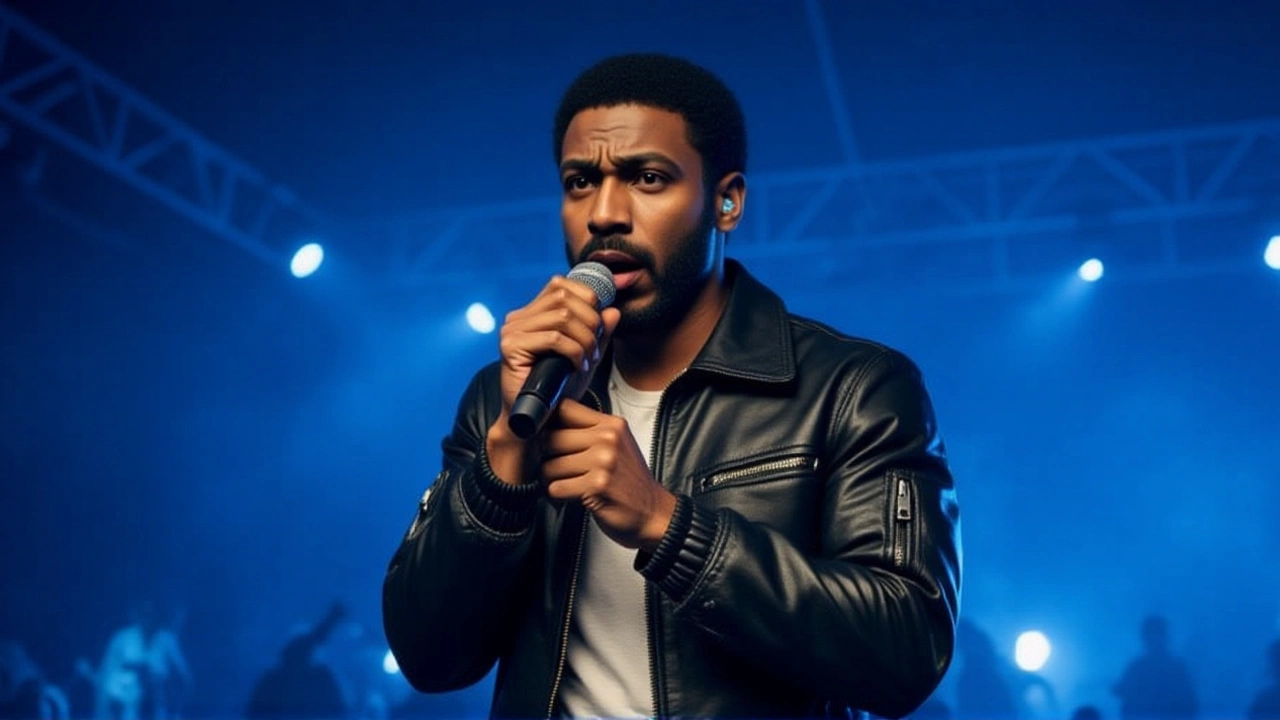
When Donald Glover stepped onto the stage at Camp Flog Gnaw Los Angeles on November 22, 2025, fans expected music. What they got was a raw, unfiltered confession: a stroke, two heart surgeries, and a career paused. The 41-year-old artist—known globally as Childish Gambino—revealed he’d been fighting for his life since October 2024, after collapsing under the weight of a medical emergency mid-show in New Orleans.
From Stage to ICU: The Night Everything Changed
It started during a performance at the Smoothie King Center on October 12, 2024. Glover, sweating through the final notes of ‘3005,’ felt his vision blur and his skull tighten like a vice. He finished the show. He always finishes. But as the crowd roared, his body was shutting down. By the time he arrived in Houston for the next date, he could barely stand. At Houston Methodist Hospital, neurologists confirmed an ischemic stroke. Then came the twist: a hidden flaw in his heart.Doctors discovered a patent foramen ovale—a tiny hole between the heart’s upper chambers, present in about 25% of people but rarely life-threatening. In Glover’s case, it had allowed a blood clot to slip from his veins to his brain. Two surgeries followed. The first, a minimally invasive catheter closure on October 15, 2024, didn’t hold. A second, more complex procedure on October 28, 2024, sealed the leak. He was lucky. Houston Methodist’s team, led by cardiologist Dr. Neal Kleiman and neurologist Dr. Robert W. Haley, called his survival “remarkable.”
The Tour That Never Finished
The Childish Gambino New World Tour had kicked off in Miami on September 20, 2024. By October 15, it was over. Seventeen shows vanished—14 in the U.S., three across Europe. Dublin’s 3Arena was set for November 30 and December 1, 2024. Those dates remain unrescheduled as of November 2025. AEG Presents, the tour’s producer, issued full refunds for 187,000 tickets. Billboard estimates that’s $14.2 million in lost revenue. Fans didn’t just lose concerts—they lost closure. Many had flown from Europe. One woman in Manchester sold her car to afford the flight to London. She never got to see him.Glover didn’t ghost. He showed up at Camp Flog Gnaw—no stage, no band, just a stool and a mic. “I went to the hospital in Houston to make sure of an ailment that had become apparent,” he said. “After more tests, I could not perform the rest of the US tour in the time asked. As of now I have surgery scheduled and need time out to heal.” No theatrics. No excuses. Just honesty.

Why This Isn’t Just a Celebrity Story
This isn’t just about a musician. It’s about a blind spot in the music industry. Touring artists, especially those over 40, rarely undergo mandatory cardiac screenings. Glover had no known history of heart disease. He was fit. He danced like a man half his age. But PFO-related strokes account for 5–10% of ischemic strokes in people under 55, according to American Heart Association volunteer Dr. Mary Ann Bauman. And modern closure procedures? They work 98% of the time. That’s the good news. The bad? Most touring contracts don’t require even an EKG.“We treat athletes,” said Dr. Lani Simpson, chair of the Recording Academy’s Health Committee. “We don’t treat artists the same way. But their bodies are instruments too.”

What’s Next for Donald Glover?
Glover’s next cardiac checkup is scheduled for December 10, 2025, at Houston Methodist. He won’t perform until at least Q2 2026. But he’s not resting. He’s writing. Recording. Prepping for his role in Lucasfilm’s 2026 film Star Wars: Lando. His personal studio in Stone Mountain, Georgia is buzzing again. Friends say he’s quieter now. More present. He’s stopped chasing the spotlight. And maybe that’s the point.He once retired Childish Gambino in 2020. Then came back. Now, he’s redefining what it means to be an artist who survives—not just performs. The music might come back. But the man? He’s changed.
Frequently Asked Questions
What is a patent foramen ovale (PFO), and how did it cause Donald Glover’s stroke?
A patent foramen ovale (PFO) is a small hole between the heart’s upper chambers that normally closes after birth. In about 25% of people, it stays open. When blood clots form in veins, they can bypass the lungs’ filtering system and travel directly to the brain through the PFO, causing a stroke—known as a paradoxical embolism. In Glover’s case, this mechanism triggered his ischemic stroke during his New Orleans performance.
How many tour dates were canceled, and what was the financial impact?
Seventeen scheduled performances across North America and Europe were canceled, including key dates in Dublin, London, and Paris. According to Billboard Boxscore data, 187,000 tickets were refunded, totaling approximately $14.2 million in lost revenue. AEG Presents, the tour’s producer, absorbed all refund costs, and no rescheduled dates have been announced as of November 2025.
Is Donald Glover fully recovered, and when might he return to performing?
Glover’s medical team has not declared him fully recovered, but his second heart surgery on October 28, 2024, was successful. He’s under strict monitoring through December 2025 and has been cleared for light studio work in March 2026. Public performances remain off-limits until at least Q2 2026, with his return contingent on cardiac stress test results and neurological clearance from Houston Methodist Hospital.
Why didn’t Glover seek help immediately after symptoms appeared in New Orleans?
Like many performers, Glover prioritized the show. He completed the New Orleans concert despite severe head pain and blurred vision—symptoms he initially dismissed as fatigue or dehydration. He only sought emergency care after arriving in Houston the next day. This delay, while common in the touring industry, underscores the lack of on-tour medical support systems for artists over 40.
Are there calls for change in the music industry after this incident?
Yes. Dr. Lani Simpson of the Recording Academy’s Health Committee has urged mandatory cardiac screenings for touring artists over 40, similar to protocols for professional athletes. The American Heart Association is now collaborating with major promoters to draft voluntary health guidelines. Glover’s case has become a catalyst—finally forcing the industry to ask: How many more artists will suffer silently before we act?
What role did Houston Methodist Hospital play in Glover’s recovery?
Houston Methodist was critical. Their neurology and interventional cardiology teams identified the PFO within 24 hours of admission and performed two life-saving procedures within two weeks. Dr. Neal Kleiman’s expertise in catheter-based closures and Dr. Robert W. Haley’s stroke protocol allowed for rapid diagnosis and intervention. The hospital’s multidisciplinary approach is now being studied as a model for athlete and artist care.


Comments
Post Comment